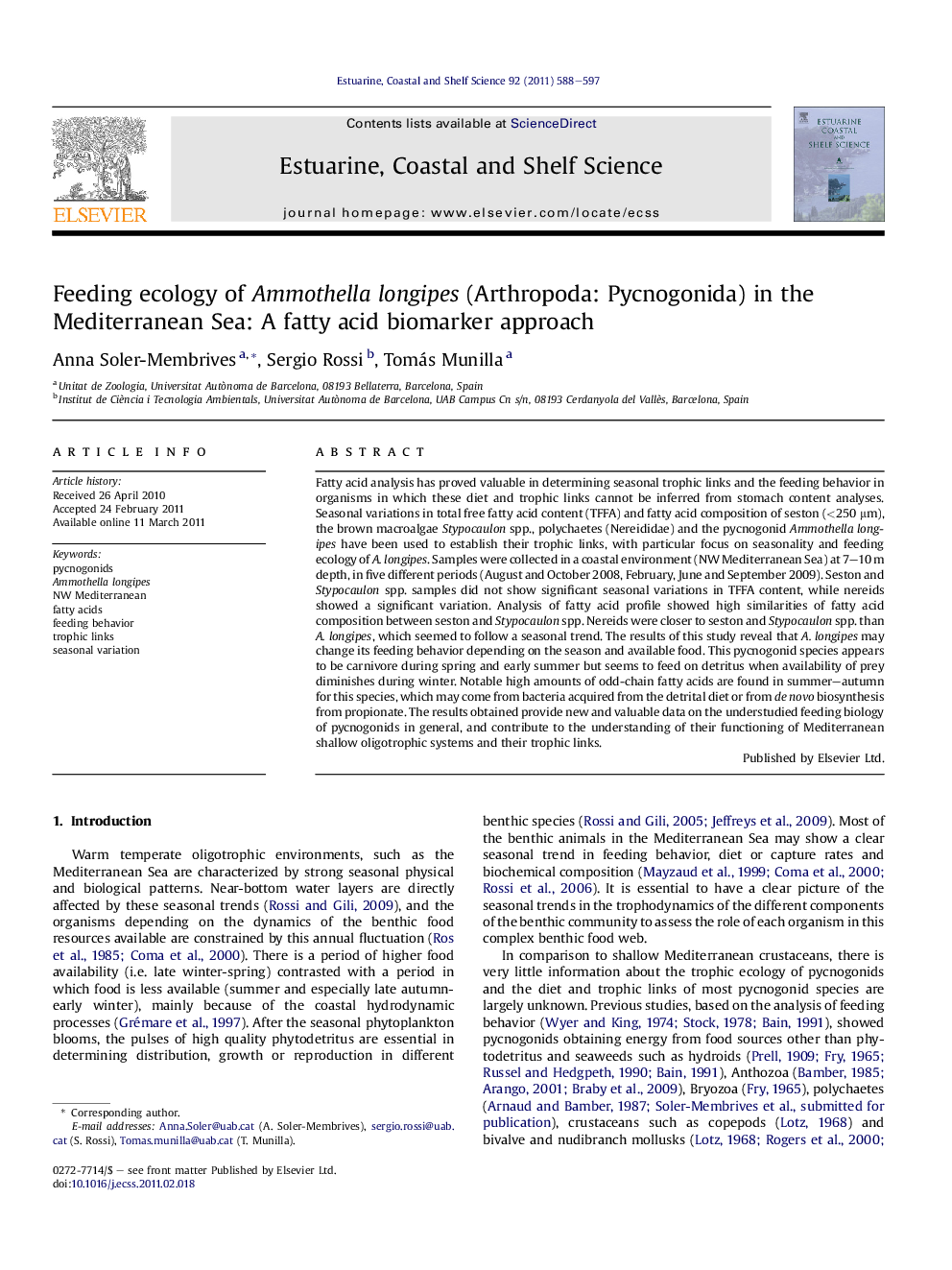| کد مقاله | کد نشریه | سال انتشار | مقاله انگلیسی | نسخه تمام متن |
|---|---|---|---|---|
| 4540488 | 1326672 | 2011 | 10 صفحه PDF | دانلود رایگان |

Fatty acid analysis has proved valuable in determining seasonal trophic links and the feeding behavior in organisms in which these diet and trophic links cannot be inferred from stomach content analyses. Seasonal variations in total free fatty acid content (TFFA) and fatty acid composition of seston (<250 μm), the brown macroalgae Stypocaulon spp., polychaetes (Nereididae) and the pycnogonid Ammothella longipes have been used to establish their trophic links, with particular focus on seasonality and feeding ecology of A. longipes. Samples were collected in a coastal environment (NW Mediterranean Sea) at 7–10 m depth, in five different periods (August and October 2008, February, June and September 2009). Seston and Stypocaulon spp. samples did not show significant seasonal variations in TFFA content, while nereids showed a significant variation. Analysis of fatty acid profile showed high similarities of fatty acid composition between seston and Stypocaulon spp. Nereids were closer to seston and Stypocaulon spp. than A. longipes, which seemed to follow a seasonal trend. The results of this study reveal that A. longipes may change its feeding behavior depending on the season and available food. This pycnogonid species appears to be carnivore during spring and early summer but seems to feed on detritus when availability of prey diminishes during winter. Notable high amounts of odd-chain fatty acids are found in summer–autumn for this species, which may come from bacteria acquired from the detrital diet or from de novo biosynthesis from propionate. The results obtained provide new and valuable data on the understudied feeding biology of pycnogonids in general, and contribute to the understanding of their functioning of Mediterranean shallow oligotrophic systems and their trophic links.
► We looked at seasonal variations in fatty acid composition of Ammothella longipes.
► A. longipes seemed to follow a seasonal trend.
► This pycnogonid species appears to be carnivore during spring and early summer.
► During winter seems to feed on detritus when availability of prey diminishes.
► Notable high amounts of odd-chain fatty acids are found in summer–autumn for this species.
Journal: Estuarine, Coastal and Shelf Science - Volume 92, Issue 4, 20 May 2011, Pages 588–597